From Popayan, Colombia to Vilcabamba, Equador
Late March I crossed from Colombia into Ecuador. At the border in Ipiales I found myself surrounded by Venezuelans fleeing their country. Literally everyone I talked to was from Venezuela. There were lots of signs at the border stating ‘here you can speak bad about Maduro (the current president of Venezuela) and Chavez’ (the former president president of Venezuela). According to the UNHCR, the United Nations High Commissioner for refugees, 180.000 Venezuelans have crossed into Ecuador in the first 3 months of 2018, compared to 230.000 in all of 2017. The UNHCR reports that neighbouring countries have been working hard to provide an appropriate response but are increasingly overstretched and more international support is needed.


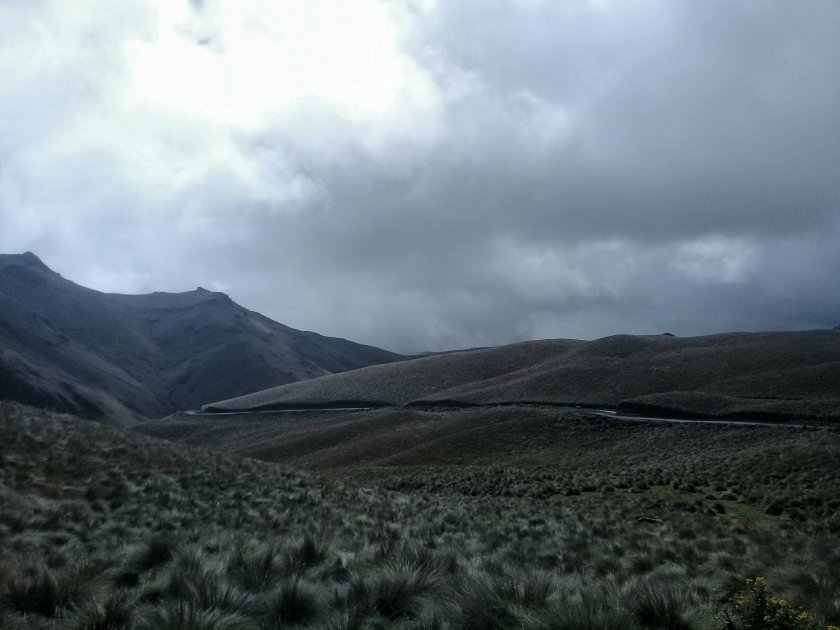
Witnessing this stream of refugees reminded me of riding the Transcontinental race in the summer of 2016.
This is an endurance cycling race from Belgium to Turkey. In the Balcan I crossed border after border, meanwhile refugees were waiting like criminals behind a fence at the other side of the border. Their only offence: fleeing from violence and seeking a better life. Apparently the first is allowed, the 2nd is frowned upon.
It made me realise once more that crossing a border is a privilege. According to Roxane Gay, acclaimed writer and bad feminist, you don’t necessarily have to do anything once you acknowledge your privilege. You don’t have to apologize for it. But you do need to understand the extent and the consequences of your privilege. Cycling across a continent becomes bittersweet once you realise your voluntary choice is someone else’s last resort.
The refugees from Venezuela are roaming out across the South American continent. In doing so they follow in the footsteps of their compatriot Simon Bolivar in the 19th century. El libertador, Bolivar, travelled all across South America to free the continent from Spanish colonialism. As so often proved in history, irony is a bitch. Bolivar ended up as a dictator of Colombia and after his death became a posterboy for the dictatorial Venezuela of Hugo Chavez. His legacy: idealistic traities about the nature of the state, a statue and a street in every town in South America and melodramatic prose about the beauty of the country. The latter accompanying me on my journey across Ecuador.
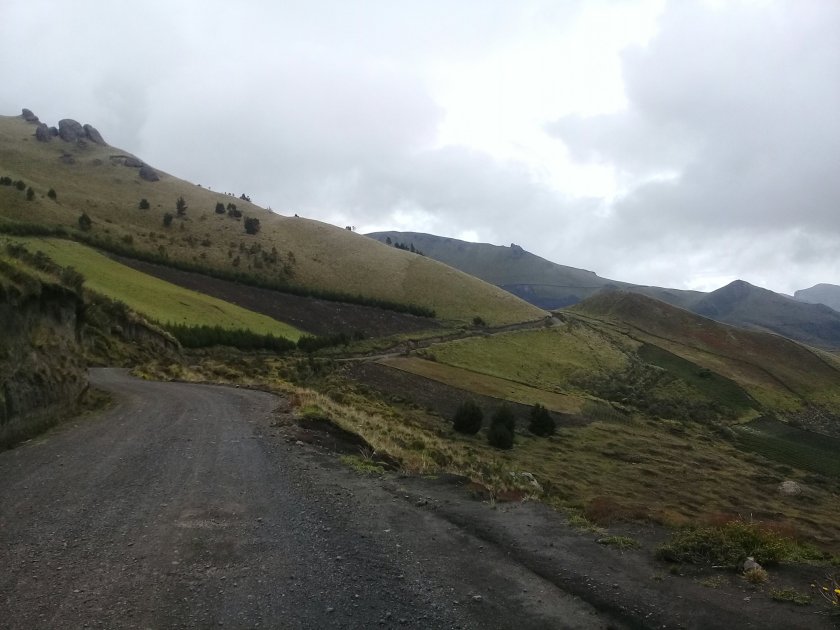




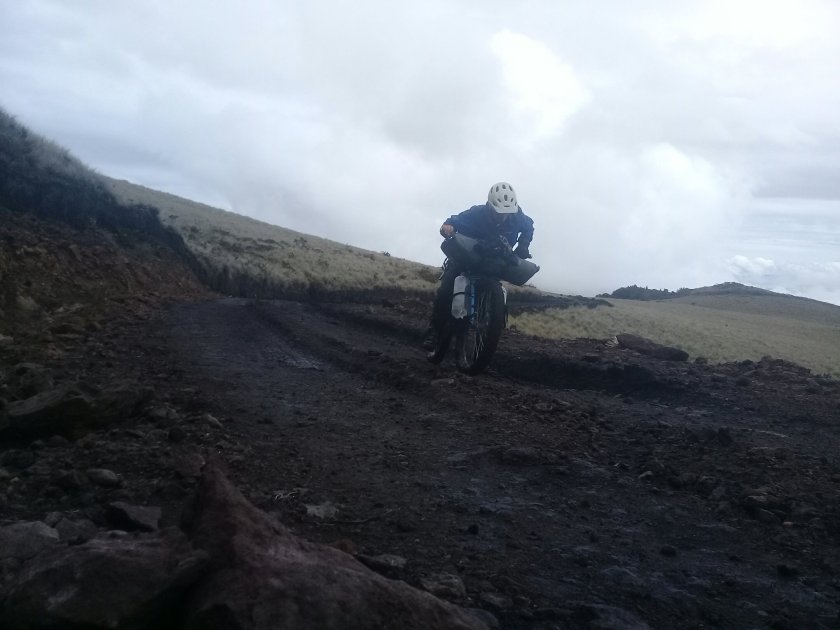
I arrived in Ecuador in the middle of rain season and quickly got accustomed to a couple of quirks of cycling in Ecuador. The first one being cobbled climbs. Here the cobbled climbs are nothing like the steep short climbs in Flanders. The only similarity being that the people building the road were probably drunk when constructing it. Deciding that tossing the cobbles randomly along the countryside would save time and therefore money.
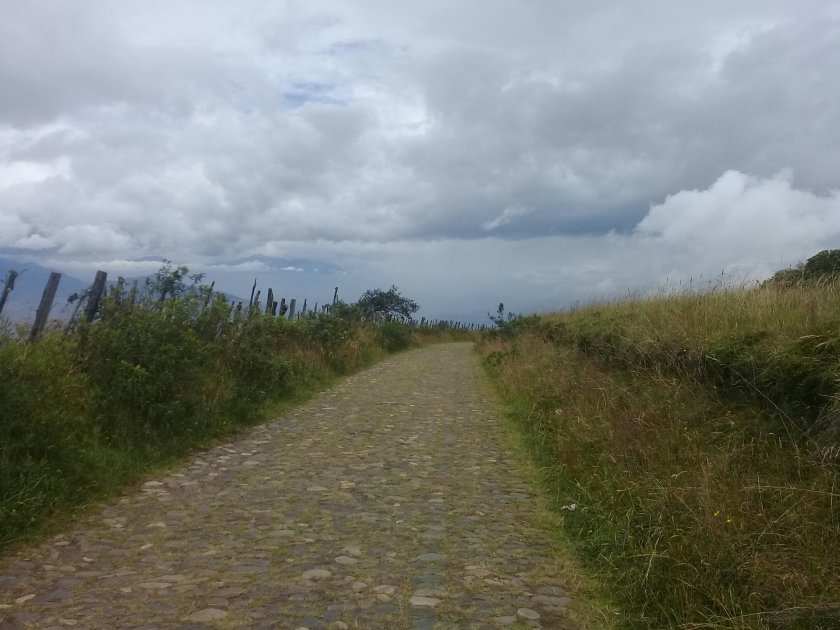
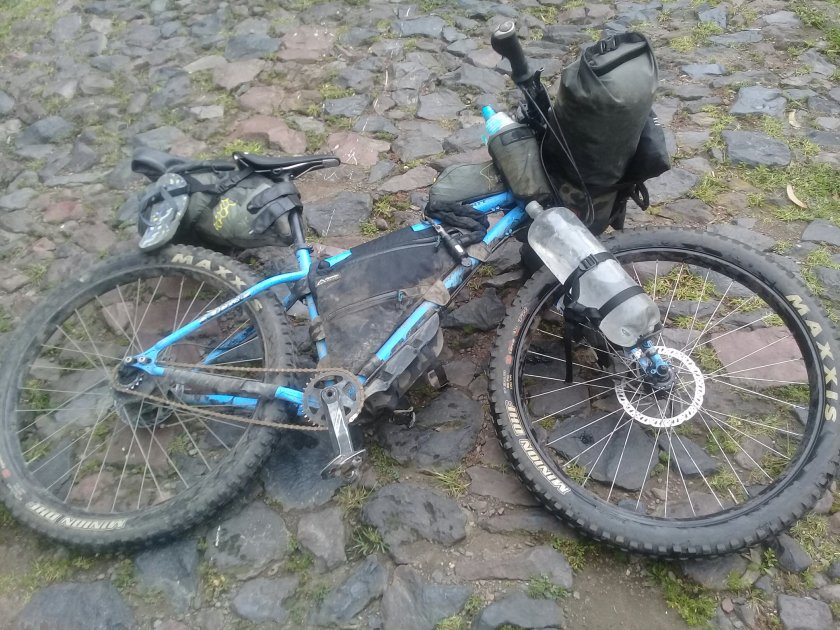
Another quirk of cycling in Ecuador in rainy season: mud, loads of mud. One memorable day I pushed my bike across the paramo for 8 hours. Only encountering 3 men and 3 horses. Coincidently they were together.

Paramo is an Andean ecosystem that can be found around 3500m of altitude.
It was cold, it was raining on and off and there was no place to shelter. I reminded myself that I had chosen to be there and that all I got to do to get out of this situation was to put one foot in front of the other. That is quite a nice position to be in, I convinced myself. So often in life doing your best is not enough and we are depending on sheer luck to get in or out of a situation. Disclaimer: this is not a protip. It worked for a while and then it sucked, it sucked big time. Late afternoon the sky cleared and for the first time in a while I felt sunbeams on my face. Now became the difficult task to pick a wild camping spot. How do you settle on a wild camp spot when every time you turn a corner another spectacular vista reveals itself? Eventually I settled for a spot without cowshit, sheltered from the wind and enough soft moss for the most comfortable bed. 5 stars.




Onto the next quirk of cycling in Ecuador: volcanoes. First one on the list, noblesse oblige, volcan Cotopaxi. Arguably it is the most famous of ecuadorian volcanoes. The volcano last erupted in 2016. Cycling in Cotopaxi national park was a dream. Quiet dirt roads all around and views that make you forget you are cycling into a headwind.

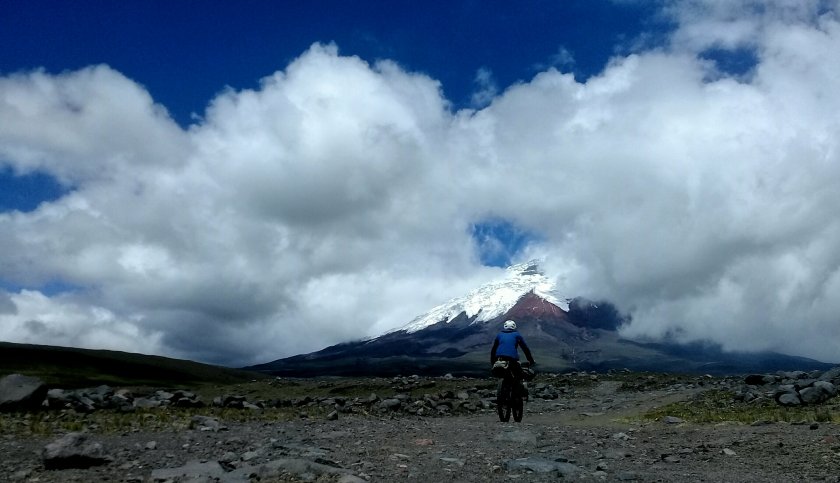
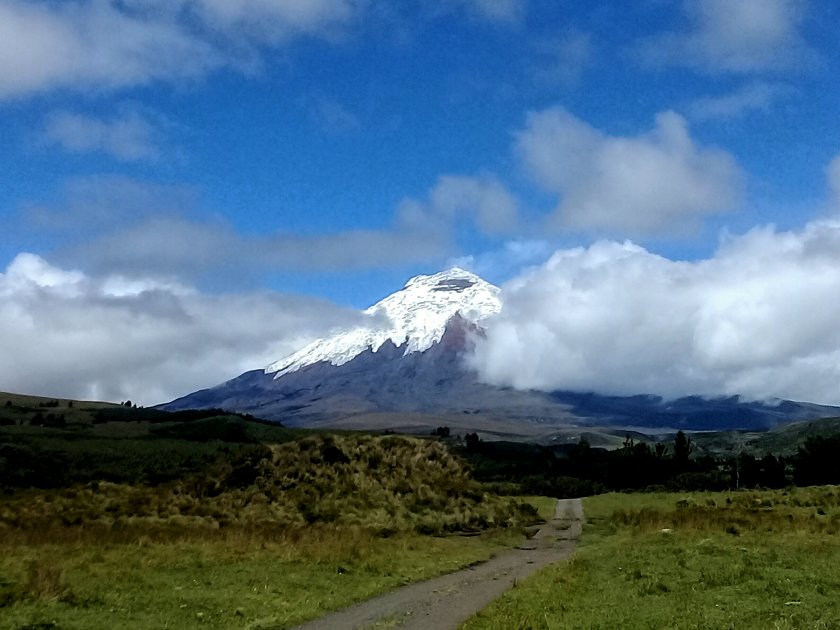
On to Quilotoa, a crater lake just shy of 4000m of altitude. When I finally got there after some very steep climbs, the lake disappeared in the clouds and appeared time and again. Some patience is required to admire this beauty of a lake.


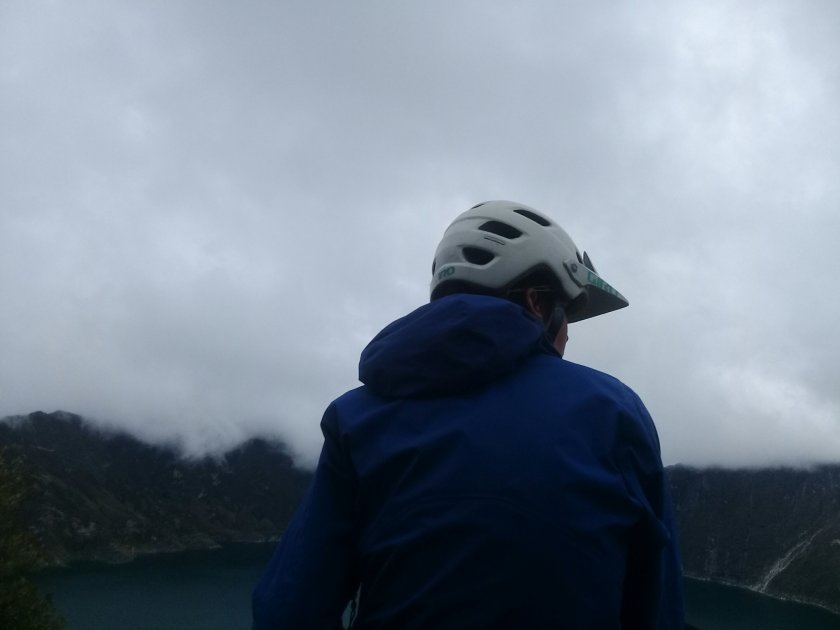
I was hoping I would be equally lucky with the weather on Chimborazo. It is the highest mountain in Ecuador and is situated in the Bolivar province. You will never guess who this province is named after. Because it is so close to the equator it is the closest you can get to the sun with your feet on the earth. Bolivar climbed the mountain in 1822 and wrote about it in the poem Delirium on Chimborazo.
“I reached the icy regions, the thin air stifling my breath. No human foot had spoiled the diamond crown placed by the hands of eternity on this king of the Andes. I said to myself, “ This cloak of Iris has served as my standard, I have carried it to the infernal regions, crossed rivers and seas, and climbed to the very shoulders of the Andes; the Earth has yielded under the feet of Columbia and time itself has not been able to stop the march of freedom. Bellona has been humbled by the brilliance of Iris – will I not be able to tread on the white hairs of that giant of the Earth? The watchtower of the world? Yes, I will be able!”
Did I mention he was slightly dramatic?
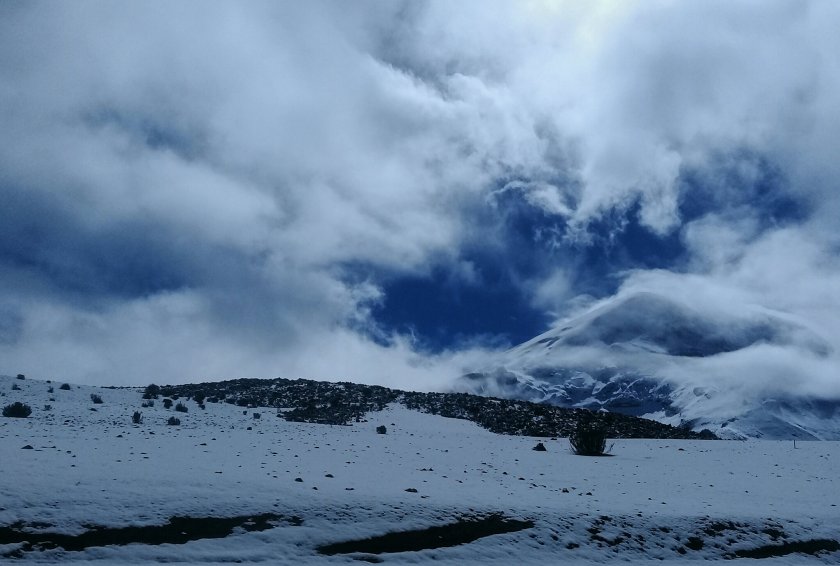
The mountain makes its own weather and is often surrounded by clouds. When I climbed up the mountain it rained. Climbing higher the rain turned into hail and eventually snow. I arrived at the refuge. It kept on snowing all afternoon. When I woke up in the morning it was still snowing. Usually in the morning there is a brief window of good weather. That day as well. I took it and skidded down the mountain.


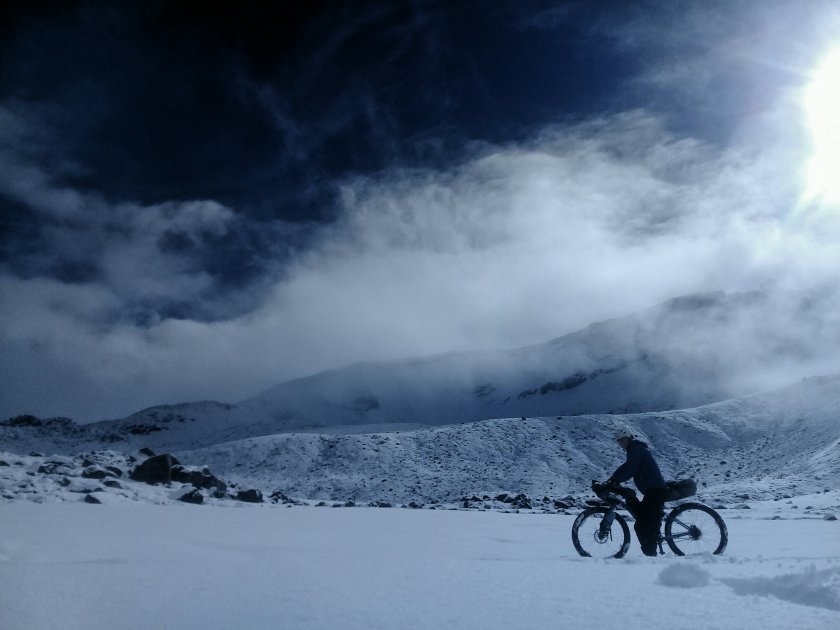

After the long descent from Chimborazo, I felt like I grew a 2nd pair of lungs overnight. I had enough breath to do my secret hip hop gestures while listening to music on the next climb. Resulting in a lot of stunned lamas along the road. But I guess looking stunned is their default expression.

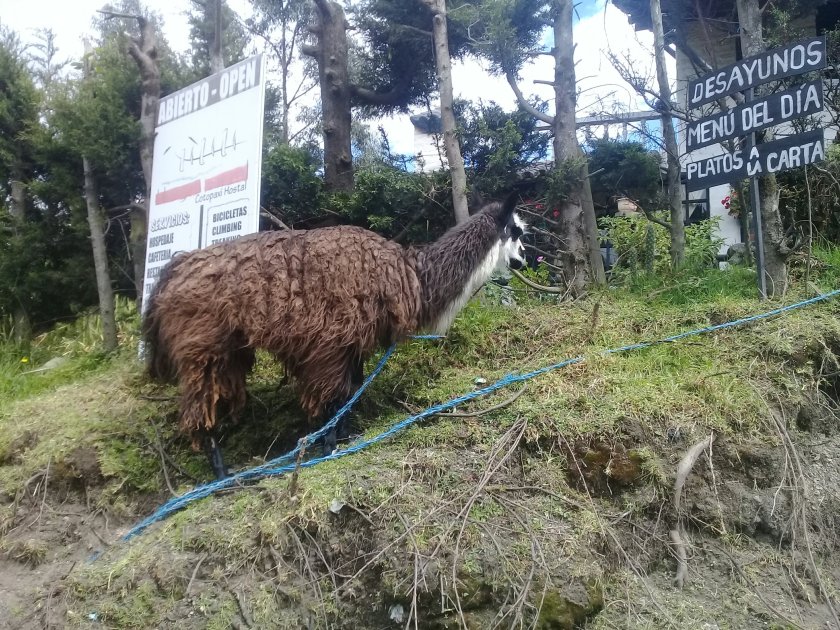
A final quirk of cycling in Ecuador: the culinary habits. No complaints as far as the chocolate caliente goes. After a long day in the cold on the bike the promise of a hot cup of chocolate milk was all I needed. That and dry socks. I was less of a fan of the smoked pigs who were not only the food, but were also expected to advertise the restaurant while skewered on a pole in front of the restaurant. It definitely had the reverse effect on my appetite.
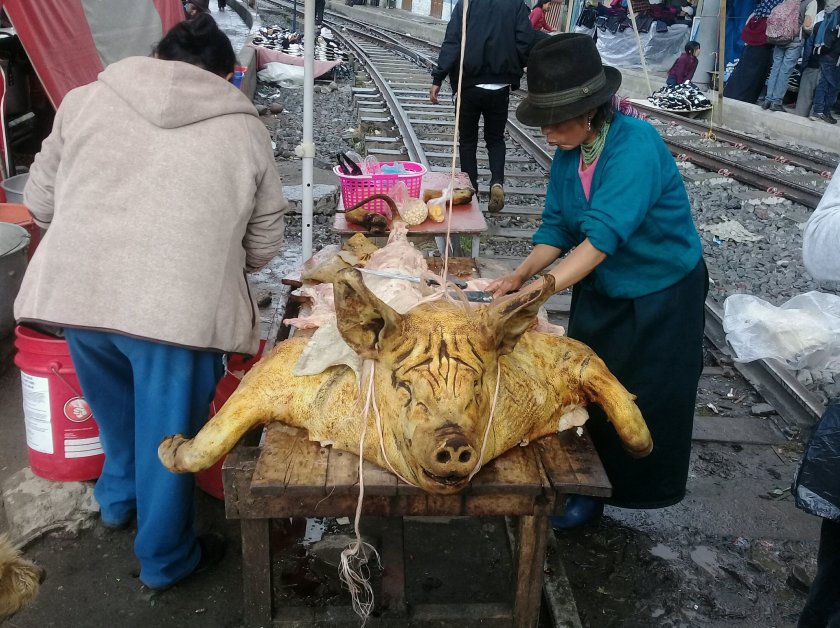
Meanwhile one year has passed since I left home. It was a privilege, it still is.
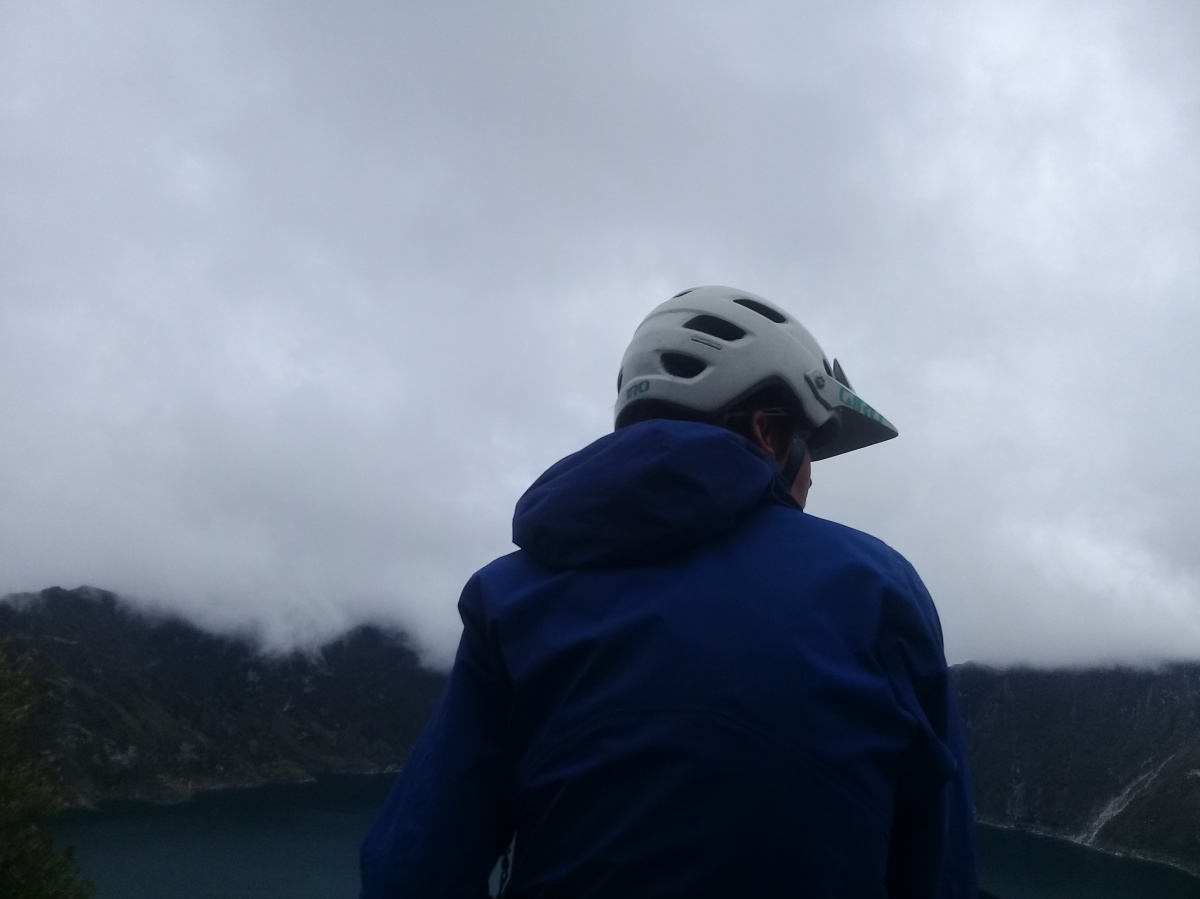
Fantastic. You make light of an extraordinary journey.
LikeLike
Hilde, na al die jaren kan je nog steeds met enkele woorden meer vertellen dan wat een ‘zin’ kan. Ik lees je omzwervingen en bijhorende bedenkingen graag.
LikeLiked by 2 people
Hey Lotte,
Leuk om je te horen en merci voor het compliment!
LikeLike
love the way how you write your story, how you link poetry, the amazing photo’s and admire what you dare to do on your own! hoed af 🙂 Liefs, Jacinta&Frank
LikeLike
Hi Hilde – I really liked your shots of riding in the white stuff, that awesome crater lake, as well as the close up of your bike (does she have a name?) – laying down on the cobbles – your ride, a true Spring Classic – best wishes! Tedly
LikeLike